Over the years I’ve spent countless hours watching kingfishers through my lens but until a few days ago I’d never seen this.
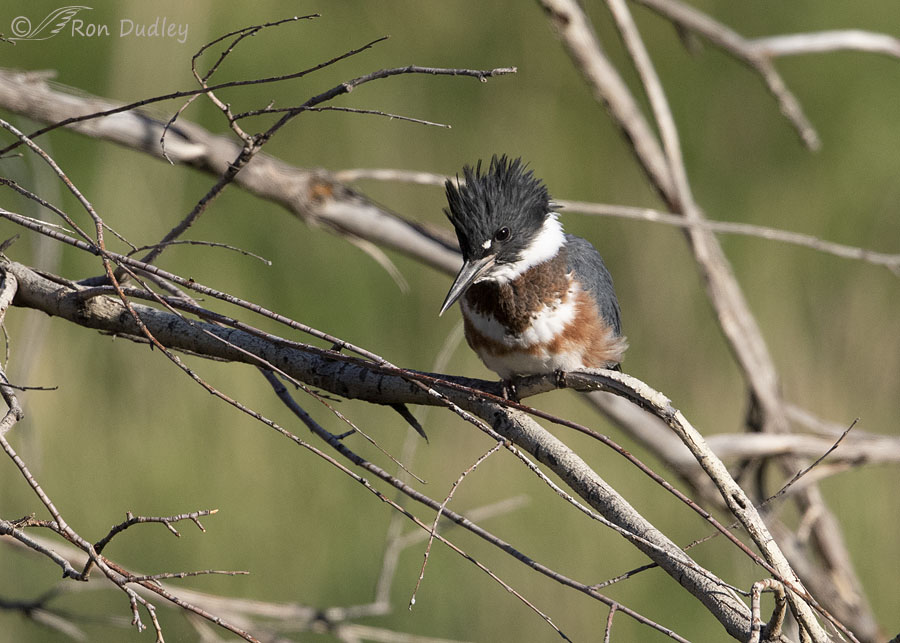
Five days ago in the mountains this immature Belted Kingfisher was fishing the small stream below and slightly in front of her. There were at least two young siblings in the area and I was pleasantly surprised that they’d already learned to catch their own fish. While I was there I saw one or both of them catch a small fish on two different occasions. At this age young kingfishers of both sexes have red on their breasts but for the sake of convenience I’m going to refer to this one as a female.
Normally I wouldn’t take many photos of a kingfisher this far away and in such a cluttered setting but I ended up taking a boatload of photos of this one. You’re about to see why.
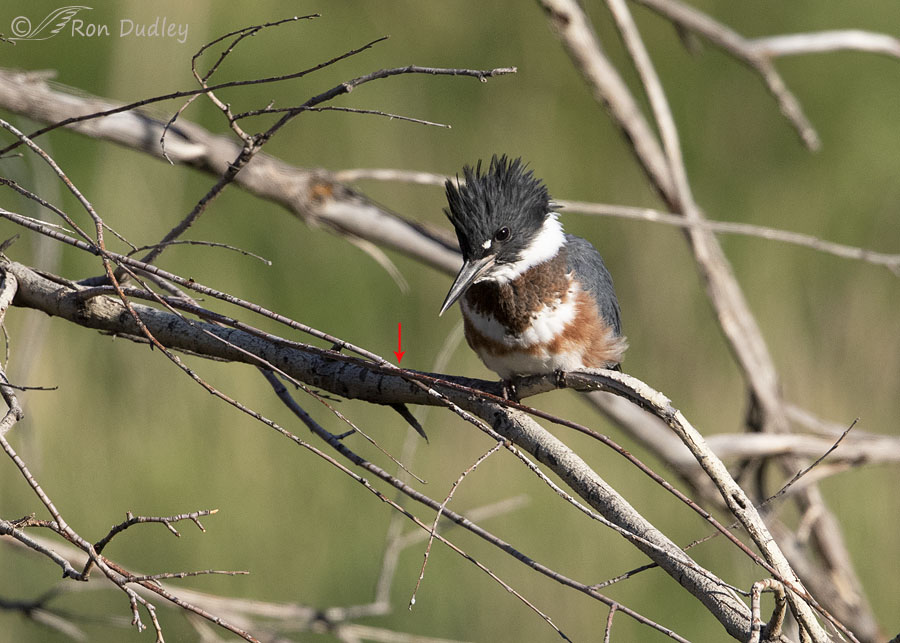
Notice those two long skinny branches that cross at the red arrow. Apparently she took exception to their presence.
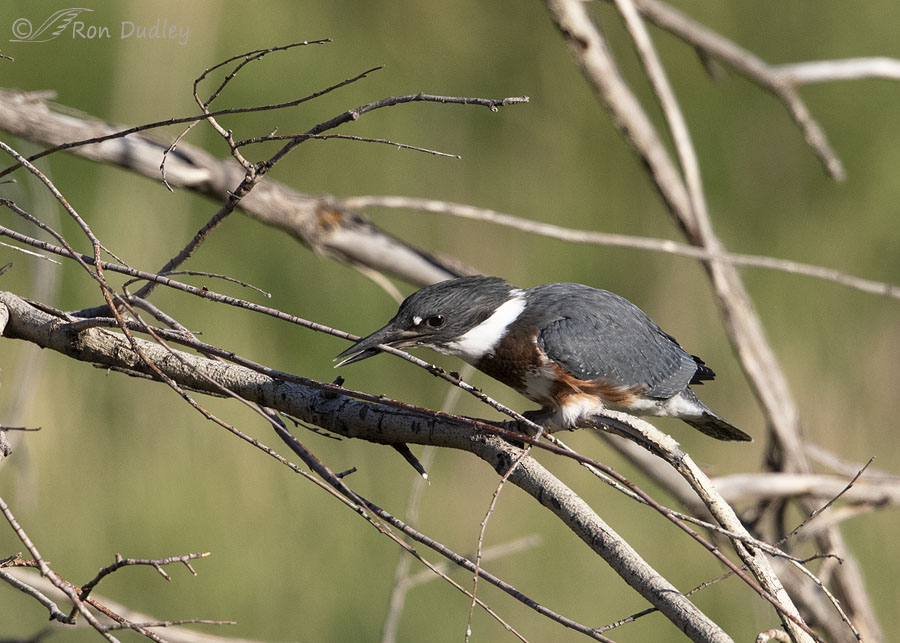
She repeatedly grasped one of them and then the other and struggled with them.
She’d lift them up as far as she could before eventually…
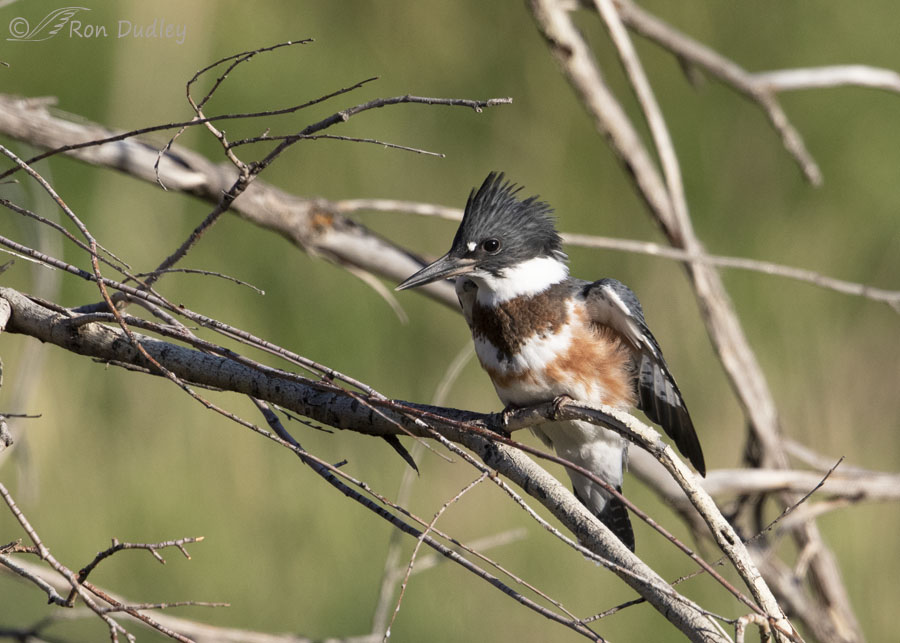
releasing them in apparent frustration because they wouldn’t cooperate. Many times she almost fell backwards when she released them and had to use her wings to stay on her perch. When she was unsuccessful with one branch she’d…
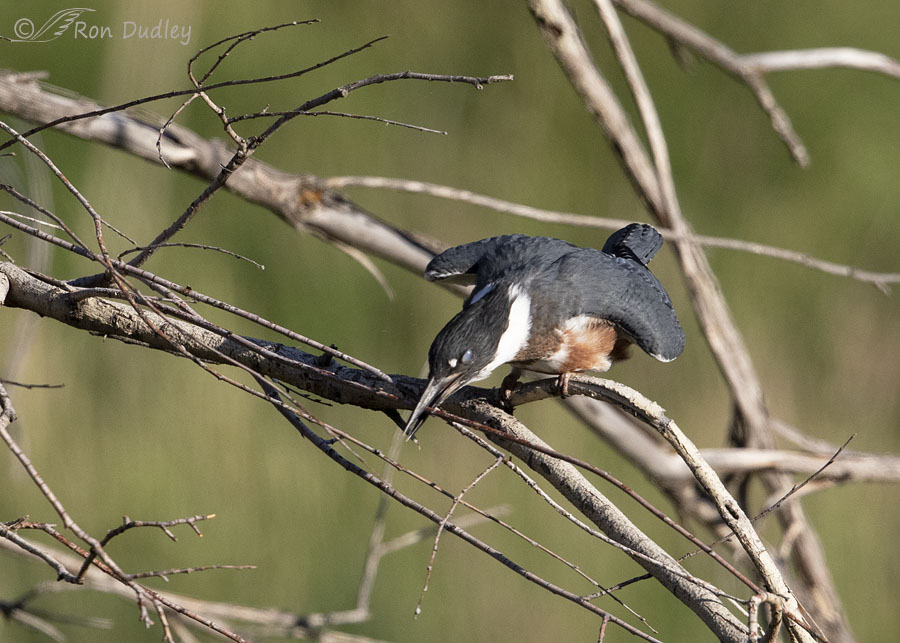
try the same thing with the other one.
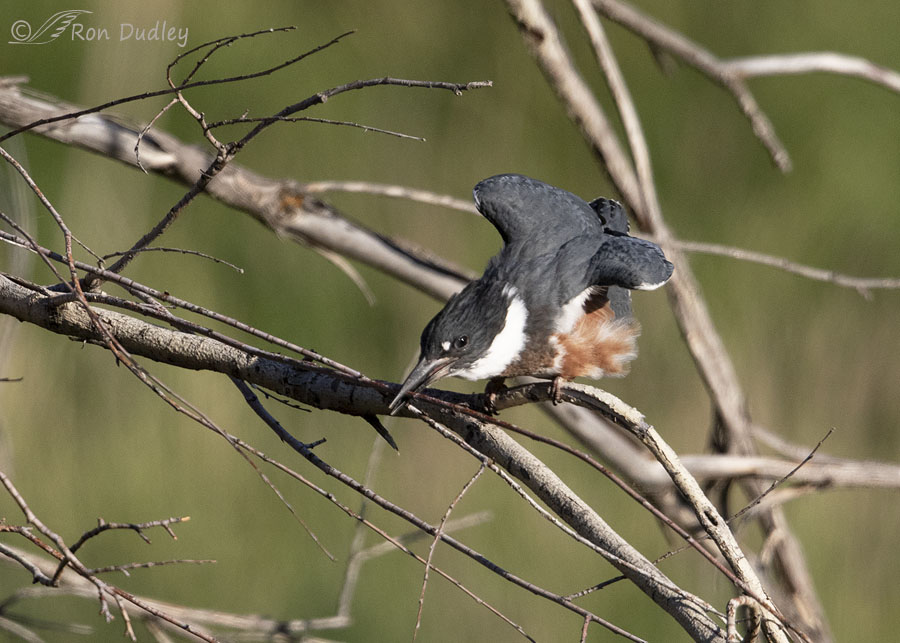
She put all her effort into whatever she was trying to do but…
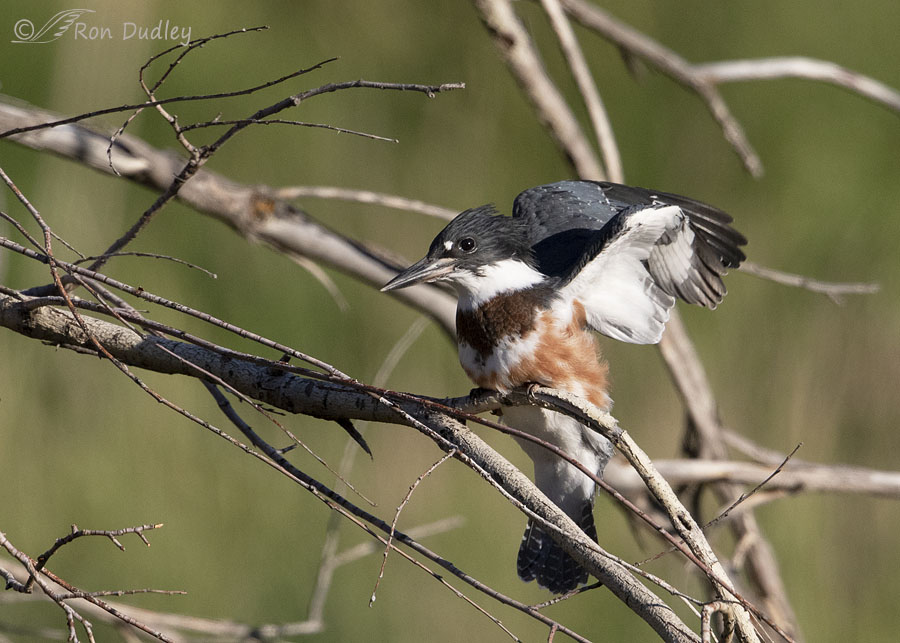
once again she almost fell backwards off her perch.
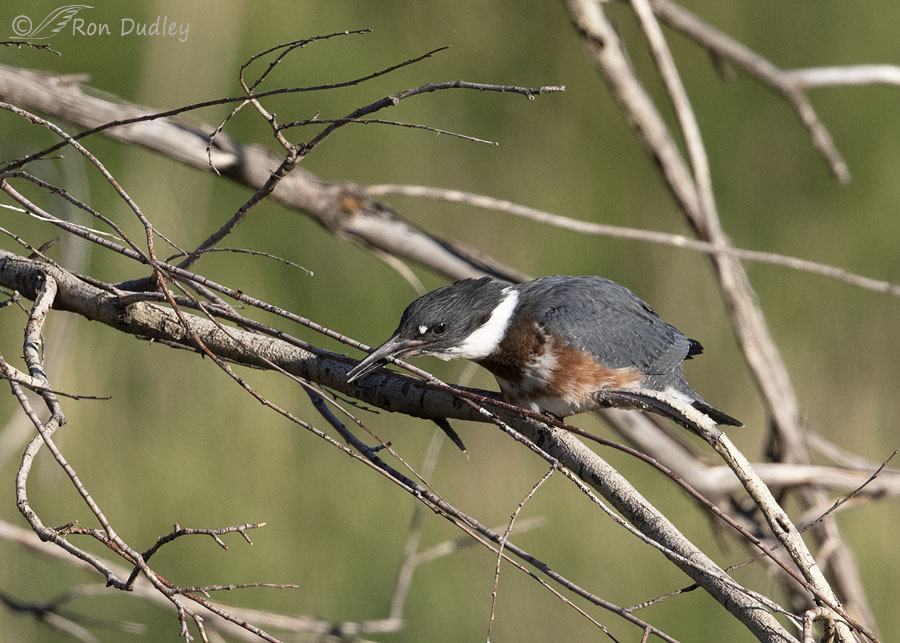
So she tried the other one again.
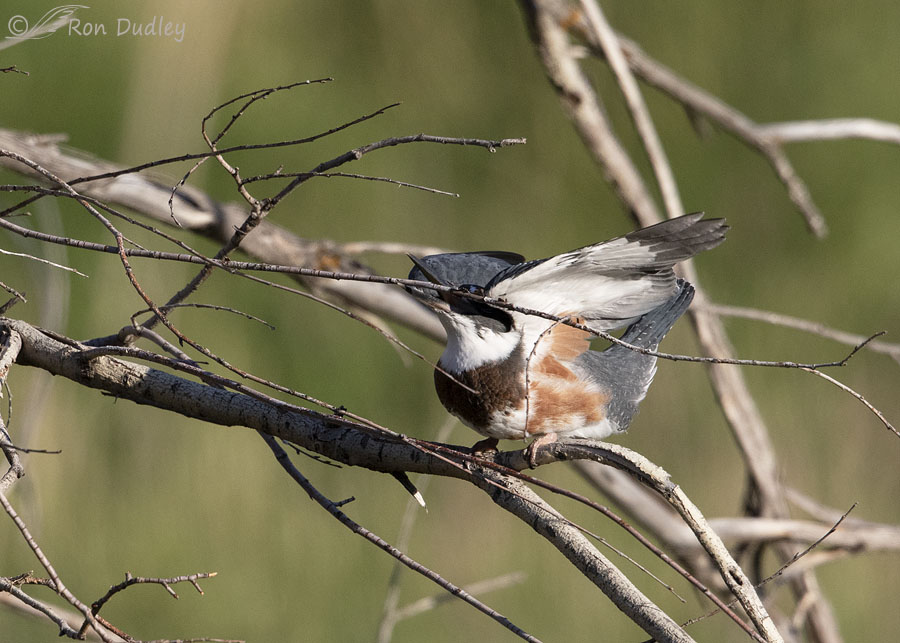
She really struggled to lift it this far up but eventually…
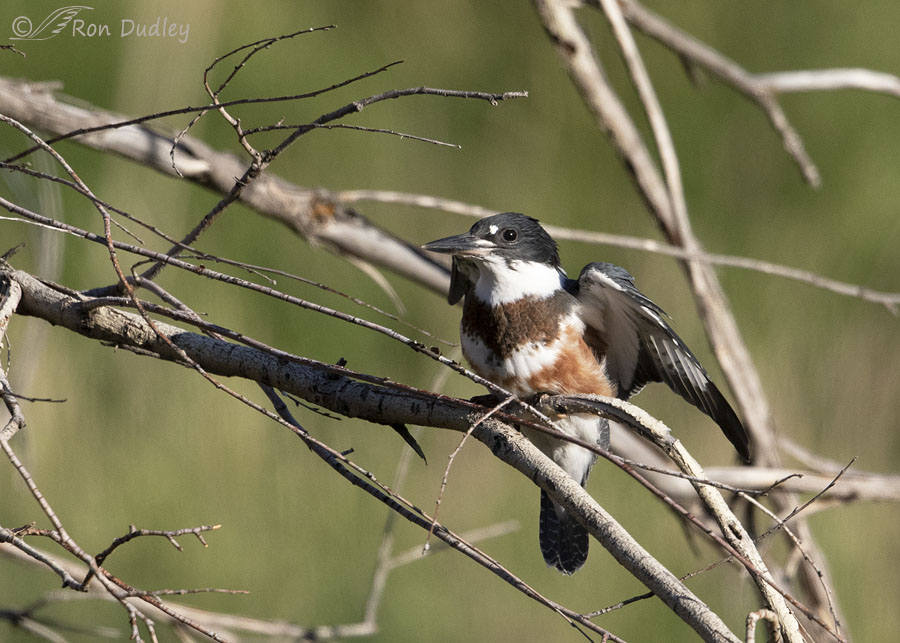
she failed once again in whatever she was trying to do. Here the branch she had in her bill is still falling back to its original position as she tries to regain her balance.
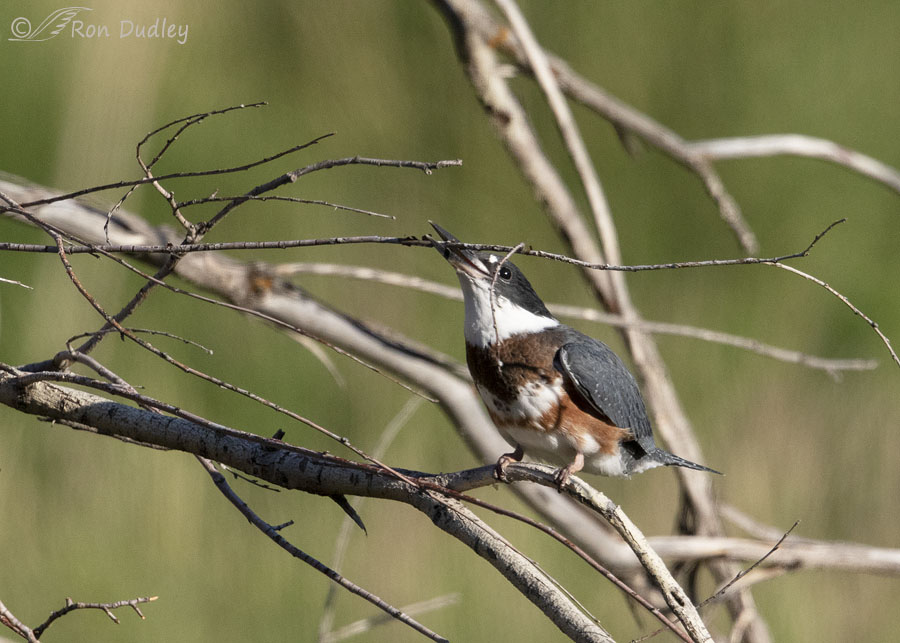
This is about as high as I ever saw her lift one of the branches but she was unsuccessful in her efforts this time too. Both very long branches were still attached to the tree so they weren’t going anywhere.
Believe it or not she continued to wrestle with the branches for almost nine minutes so you can imagine how many photos I took. I’d never before seen this behavior from a kingfisher of any age so I racked my brain to try to come up with an explanation for it. I thought of only three possibilities:
- She’s a young bird so maybe it was simply the curiosity and exuberance of youth on display.
- Recently fledged kingfishers are known to play. For example they’ve been observed “diving for and retrieving floating twigs with their bill. Twigs were carried in the bill to a perch where they were tossed and recaptured in mid-air while the bird remained perched.” So perhaps she was just playing.
- Maybe the two branches were in the way of her flight path to a fish if she saw one below and in front of her so she was trying to get rid of them.
The more I thought about it the more I leaned toward the third option. I’ll try to explain why by using a photo of a different kingfisher, below.
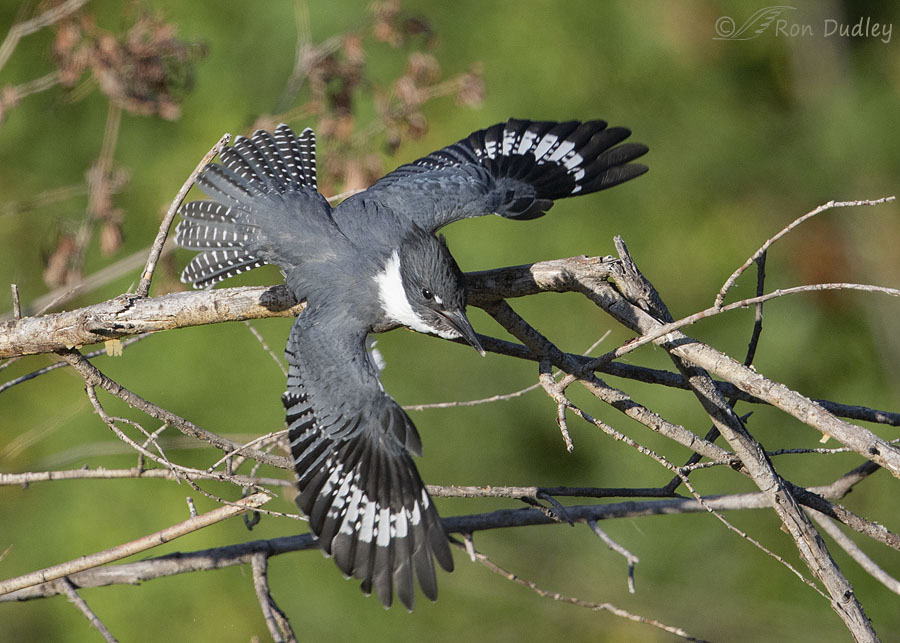
When kingfishers dive after a fish they really don’t like to take detours. The fish they capture are typically quite small, very quick and they often spend only a very brief time on or near the surface of the water so there’s no time to waste. When kingfishers dive after a fish they almost explode off their perch in a beeline straight toward the fish. Any detour, however small, is counterproductive.
It wasn’t until I posted the following two photos to my blog four days ago that I realized I had evidence to support the third explanation for her unusual behavior.
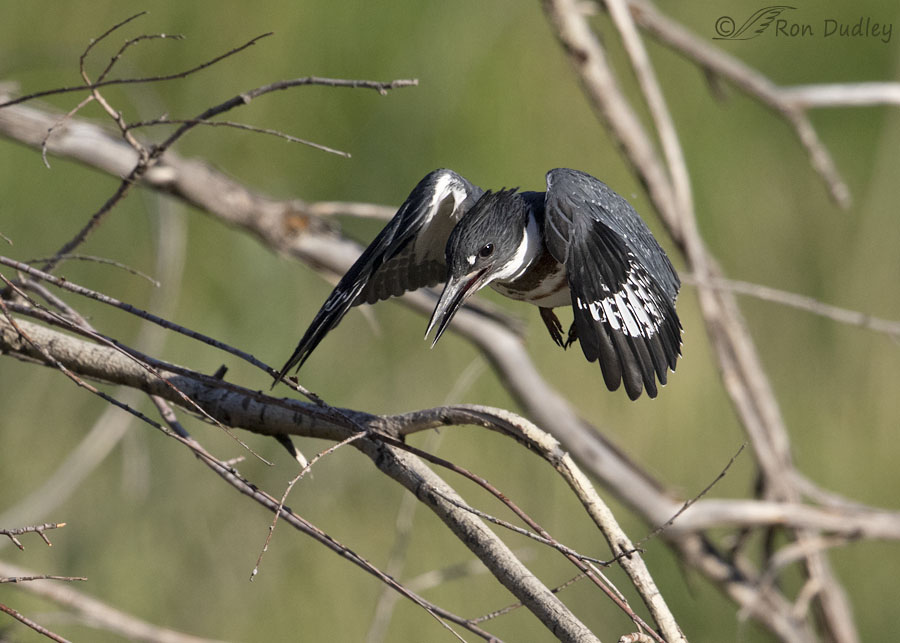
Only moments after she quit wrestling with the branches she dove after a fish below her. But she couldn’t head straight for the fish because those annoying small branches were in the way. So she had to take a detour by first flying up a few inches…
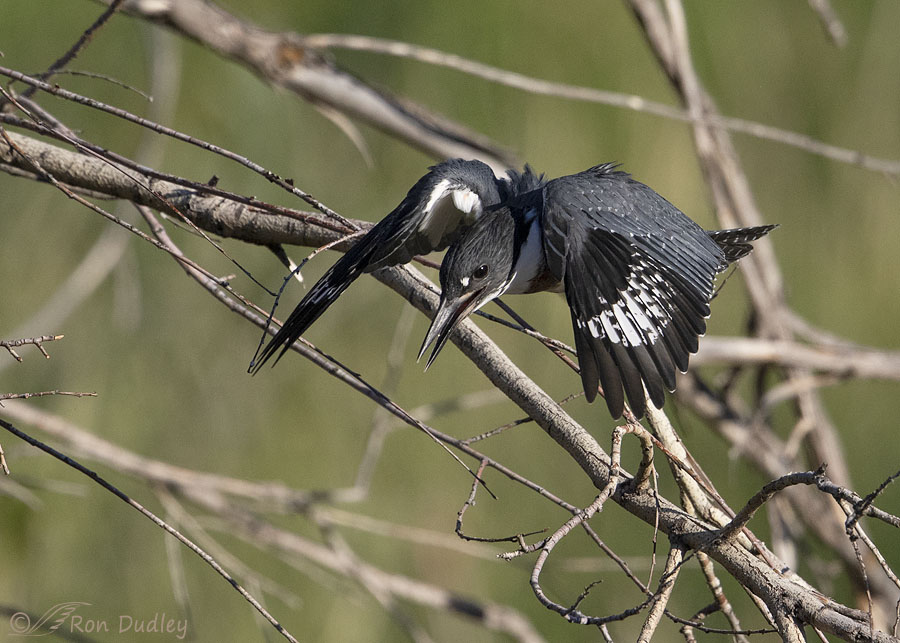
and then forward…
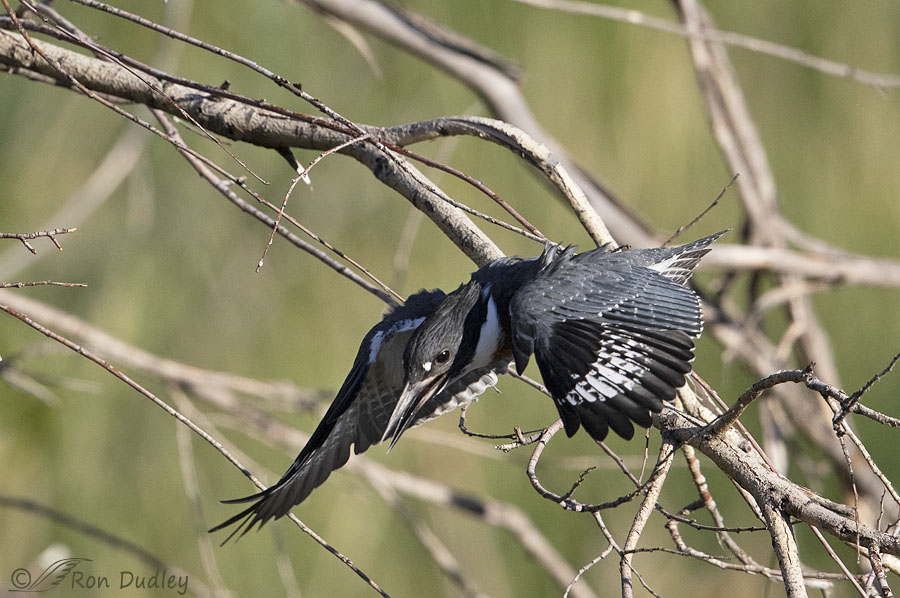
and then down after the fish. That detour allowed her to avoid the branches but it cost her time. I don’t remember if she caught the fish.
So I believe she was trying to get rid of those darn branches. Pretty smart bird if you ask me, even if she didn’t have the muscle power to get it done.
Ron


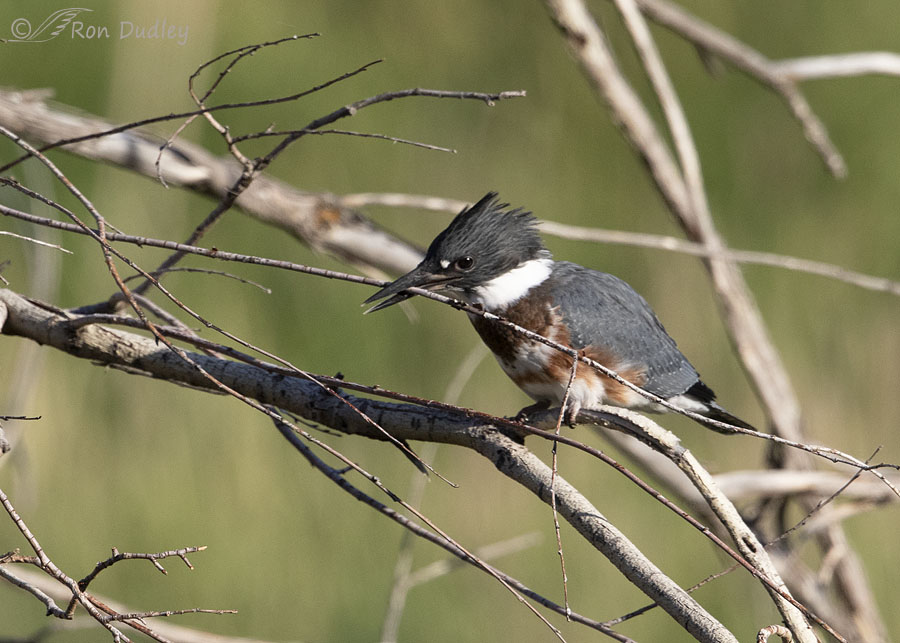
I visit here to view quality photographs and end up learning stuff.
Every. Single. Time.
As she gains experience, perhaps this Kingfisher will learn to select a better perch. Or bring a chainsaw.
Thank you, for a great post, Ron!
(Sorry to be a “sporadic” visitor lately. Doggone life keeps interfering.)
“perhaps this Kingfisher will learn to select a better perch”
I suspect that will be the eventual outcome, Wally. That or she’ll move on to a completely different area. Because of the drought that particular creek has little water left in it.
She’s a persistent little bird, and that is to be admired (and your photos are, as well)! Another great series, Ron — I love all the time we’ve spent with your Kingfishers this summer. (Which reminds me … will you have a chance to get back to see your/our favorite Red-tailed Hawk family? 😉)
Chris, nope it’s too late for that red-tail family. The youngsters would have already dispersed. I’m sad that I missed them.
🙁 Doggone, where did that time go?? We’ll just have to hope all four chicks are safely fledged and learning the ropes from their parents and each other.
What a very smart little bird who had her eye firmly on the prize. I really hope that she survives and thrives. And her determined attitude has me smiling. Broadly.
EC, she demonstrated to me that she’s determined enough, and smart enough, to increase her chances of making it long term.
Great, great story and fabulous shots. What an interesting way to spend a morning. I could almost feel her frustration and determination. They may not have opposable thumbs but in many ways they are probably smarter than most humans.
They’re definitely smarter than some humans I know, Granny Pat. And far more interesting.
Could be playing. Could be working to remove an obstacle. Makes me wonder if sometimes those are categories we use to understand other species behavior. Kinda like us puzzling over its gender: the bird knows; we speculate. In any case, another thought-provoking series. Your boatload paid off.
“the bird knows; we speculate”
Exactly, Lyle. But I enjoy speculating – trying to figure it all out.
I think you must be right. And I am amused at the tenacity if the young. Or should I say stubbornness? Because surely there was another spot with less interfence. But,no dammit. Imma stay RIGHT here. 🙂
Almost nine minutes of trying! I was amazed.
These wonderful photos remind me of the incessant advice of the I Ching – Perseverance Furthers! Thank you!!
Thanks, Mary.
What interesting behavior. I am betting on her just wanting the branch out of her way, and rather than move to a new position she thought she could move it. Once again you present us with so much more than just great photos.
Wild hail storm late yesterday – temp dropped from 95 to 60 within 15 minutes resulting in some areas looking like they were covered in snow. The noise of the hail hitting the windows was loud. We have hours of leave and debris cleanup out there. But coffee first.
Everett, I’ll bet a 35 degree drop that quickly got your attention. Not as much as the hail and resulting damage though.
I hate it when my garden gets torn up by hail.
Thanks for another excellent post, Ron. I like the shot where she’s closed her nictitating membrane- her “safety goggles” properly in place. Love seeing the behaviors!
“Safety goggles” – I like the analogy, Diane.
Incredible photo story! I like your explanation — it makes sense as she chose the branches that were in her vision line, rather than others. Youngsters are intent on getting food when they are hungry.
Thank you, Kent.
Your earlier post about flipping Canadian Geese was quite interesting and I had wanted to comment, but your comment section was closed. So, accept my apology for responding to that post here.
I will share a similar incident.
Yesterday I saw a half dozen Canadian Geese preening on Keuka Lake, NY. They took turns flipping over on their backs apparently to wash themselves as part of preening. I had never seen this behavior before and so did a search and found your entries on the subjet.
Oddly, while the geese took turns doing this, some also dived entirely under water for a couple of seconds. It also seemed they were doing so to preen themselves. Also, I had never seen this behavior before.
When a goose did either of these two behaviors, the other geese seemed to react as if they were scared and “flew” “swam” away rapidly in all directions. When the goose came up or righted itself, all the other geese immediately calmed down.
I worked with thousands of Canadian Geese at a wildlife research center in Jamestown, North Dakota in the Summer of 1970, so I’ve followed their fantastic recovery over the years. However, I’ve never seen this behavior at all before.
Take care,
Malon
Malon, I’ve seen that goose behavior one time since I published that post. No photos though.
Comments were closed on that older post is something that I’ve set up to happen automatically after 10 days. It helps to cut down on spam comments.
Almost exactly what any bird photographer would do if there were small branches blocking a good camera shot!
Wonderful series of shots. This kind of stuff is the reason I click on your email every morning. Thanks
“This kind of stuff is the reason I click on your email every morning”
Good to know, Porcupine. I just wish I could photograph more of of this kind of “stuff”.
I’d have guessed she was just hoping to get them out of the way BUT! Knew what needed to happen just couldn’t get it done! Fun to watch the immature learn to do what they need to….. 🙂 Still none here this year.
Vicious wind storm out of nowhere last evening – 50mph gusts for most of an hour. 😲 Has an airport warning – one for the rest of us came when it was “tell me something I don’t know” time…. 🙁 Missed one fire – caused evacuations in another.
I heard about your wind event, Judy. No fun, especially when there are fires.
I thought of the third option immediately. After all , that’s what a human would do if branches were in the way.
Thanks for your wonderful lessons on bird behavior.
You’re welcome, Pam.
How fantastic to see this behavior! Birds are much more complicated critters than the “birdbrain” idea would support. Thanks for this series ,- I love to see Kingfishers, and appreciate your excellent camera work and patience. And. I need to thank you for teaching me about young Kingfishers having the orange “belt”. News to me, thanks.
Thanks very much, Noel.